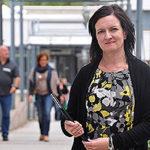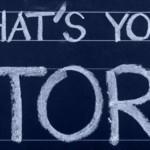
Anne-Maria Korhonen, Sanna Ruhalahti & Jaana Torseke
Nowadays different kinds of learning environments are needed, and it is important to consider how these competences will be managed in digital environments and in professional teacher education. Open Web 2.0 tools are used increasingly by students as their personal learning environments. There has emerged a need to centralize an individual’s competences in one forum – an ePortfolio. Formal, informal and non-formal learning approaches are counted as a base of competence and ePortfolios can see as a potential solution to make them more visible. In this article we focus on professional student teachers’ views.
In the first stage of the ePortfolio process, students create a workspace. During the second stage, at the end of their studies, they should form showcases using the materials featured in their workspace. The overall idea is to support their lifelong learning by use of personal learning environments. It is crucial that students own the learning outputs rather than those outputs stagnating in a specific educational organization’s learning management systems (LMS).
One study group of professional student teachers in HAMK University of Applied Sciences completed the entire training program (60 ECTS) by using ePortfolios as their personal learning environments. At this stage, students seem to prefer using open web tools such as Blogger and WordPress as their personal learning environment and ePortfolios. Previous research in the teacher education context have shown that the ePortfolio has proven to be a useful instrument for the assessment, however student teachers believe that it is unable to reflect and show their competences enough (Struyven, Blieck, & De Roeck 2014).
This report presents a small-scale study based on responses from eight student teachers (n=8) in a professional teacher education program provided by the Häme University of Applied Sciences, School of Professional Teacher Education, Finland. This article focuses on how professional student teachers understand the role of ePortfolios as a part of their learning process and what their experiences are. The study results reveal that positive attitude and increased interest towards ePortfolios are shown when the student manages to see the long-term personal benefits in creating and maintaining an ePortfolio.
ePortfolio as a part of competence based professional teacher education
Professions include many different competences, and formal education is not the only way to complete the competences needed in modern working life. One key element of this is how competences are made visible and transparent, and how in digital mode these may continue to be visible in the future. Related to this, Barrett (2010) states that an ePortfolio is a collection of evidence that shows a person’s learning journey over time. According to Struyven, Blieck and De Roeck (2014) in the context of competence-based education, the portfolio has been enhanced as a potential tool for the development and assessment of teaching competences.
Barrett (2010) explains that ePortfolios need two stages. First, students may create a workspace where they can save all of their work, important materials etc. These kinds of workspaces do not reveal the best parts of a student’s competences, but instead all the information needs to be clarified and highlighted in a showcase. Daunert & Price (2014) argue that ePortfolios foster professional growth through their capacity to support development.
A teacher has a big role in scaffolding students to use their personal learning environments. As such, a teacher needs to consider what kinds of assignments will provide learning outcomes that show a student’s competences based on authentic work situations. Peer learning, collaborative work, authentic learning and peer assessment, as well as teacher assessment are tools suited for building up a professional learning environment and an ePortfolio. The overall scaffolding that is employed needs to be personal and supportive for each student. Therefore, teachers need to immerse themselves in authentic learning and teaching situations and rely on their professional teacher practices.
An ePortfolio is a collection of a student’s artifacts (Barrett 2010). In this respect, all assignments given by a teacher should be set in a way that makes the student’s competences visible as an artifact in a digital portfolio. The teacher needs to be a technical support and guide as well as content specialist. In order to develop, students need to have confidence to follow their teacher’s instructions (Salmon 2003, 30).
Tools for personal learning environments and ePortfolios
Open Web 2.0 tools are defined as applications allowing users to interact, collaborate and share with each other by using technologies such as blogs, wikis, streaming videos, social networks, open access and socially driven content; these are just a few of those mentioned on Abram’s (2007) list. These kinds of open social software enable students to collaborate, interact, and easily create online communities (Özkan & McKenzie 2008). Wheeler (2015, 79) emphasizes that open web tools are not only for sharing and producing something but they also shape our minds in new ways.
Students are encouraged to employ critical thinking skills concerning the learning management systems (LMS) of educational institutes. Often, such systems have a closed infrastructure and students cannot maintain access after their studies are completed, even to their own materials. Therefore it is important to let students choose learning environments and web tools that will belong only to themselves and continue to be available throughout their lifelong learning journey (Cejudo 2012; Vuojärvi 2013; Fiedler 2012).
The idea of a Personal Learning Environment and personal web tools is that the student can make her own choices when choosing them. There are a number of tools to choose from and therefore the PLE is always unique. There might be specific tools that are useful for certain steps. For example, when creating content it is useful to apply blogging as a tool and there are different kinds of applications suited for creating e.g. videos, pictures, figures, text or calculations. The same applications can be used for organizing content along with tagging. Especially, when sharing content, tagging is a useful tool, which can be used to incorporate items into a blog. The collection of outputs goes into an ePortfolio that could take the form of e.g. a wiki tool (Wheeler 2015, 127). Bassani and Barbosa (2016) have studied the criteria used to select web tools based on a personal learning environment perspective. They found that tools have to work on the web and be available free of charge. They also should have a hybrid mode of access enabling usage on different kinds of devices. The possibility of synchronous or asynchronous communication is also reflected in selecting a tool, particularly as students want to choose tools based on their visibility – either wide open to the world or displayed within a closed environment.
Aim and context
The setting of this research was student teachers (n= 8) in the Professional Teacher Education program (1 year, 60 ECTS) in HAMK University of Applied Sciences, School of Professional Teacher Education. These student teachers belong to a pilot group with special focus on digitalization in professional education and were required to create ePortfolios as a part of their personal learning environments (PLE) by documenting their learning journey, process and creating their artifacts as learning assignments.
Extensive Google questionnaire forms with qualitative, thematic questions and sub-questions were used. Two of the teacher students were interviewed in-depth online in a one hour long Skype-meeting whereas the other six responded by answering the above-mentioned Google questionnaire forms during their free time. Participation in the study was voluntary.
During their study year, the student teachers have used Skype for Business, WhatsApp and Cisco WebEx for independent communication between the different student teams as well as for communication with their teacher. For assignments, file sharing and other tasks, MS OneDrive, Google Drive, YouTube, Padlet and blogging have been their main working tools.
The aim of this small scale study was to investigate how student teachers understand the role of ePortfolios in their journey to become professional teachers, what their user experiences are and what kind of benefits they are able to point out at this stage. They were asked about any challenges they have encountered while creating ePortfolios, as well as what kind of support they might benefit from in the future in order to facilitate the ePortfolio process. Additionally, students were polled about the possible use of ePortfolios as assessment tools.
Results
When the students were introduced to the term `ePortfolio` they mostly associated it as being only a learning diary, often in a blog-format using open web tools. Having chosen the digital study mode, this group of students unanimously describes itself as being competent when it comes to the basic technical aspects and required IT-skills for creating an ePortfolio.
“Everything I do is in electronic format already.”
The students are already actively collecting and storing their personal artifacts. However, one third of the polled students answered that they had never used ePortfolios. The term “ePortfolio” is understood very differently from person to person. In some students’ mind, it has already expanded to include LinkedIn and other similar electronic portfolios whereas others do not see even their own blog as an ePortfolio yet.
When the concept of the two differing aspects of an ePortfolio is introduced, namely ePortfolio as workspace (learning diary, etc.) and ePortfolio as the final product or showcase (for job seeking purposes for example), it quickly becomes clear how important it is that the educational institution supports the transformation process by scaffolding. However, the teacher’s role can be considered detrimental in helping the student transform the workspace portfolio into a showcase portfolio. The aim is to foster creativity and enthusiasm among the students and to give them the ownership of their own learning path by scaffolding and enabling them to create their own personal learning environment (PLE).
“In the beginning we got blogging advice and now we are often reminded if the blog text is late, which I appreciate.”
“You must know what to ask for.”
“We should start the process at the very beginning of our studies.”
The students in this study were more unsure and concerned about their potential lack of non-technical skills, namely language and visual skills, to be able to create variable and visually pleasing content.
“How to use proper language and how to make the text interesting to others by selecting the right and important content.”
“I don’t know how to put all my knowledge into words.”
“Vlogging (video blogging) should be mandatory in teacher studies.”
The polled students were also asking for timely feedback and guidance but above all demonstrations of inspiring showcase ePortfolios since for now, as one student put it:
“My blog is only for study purposes.”
The following student comment was echoed by about half of the other students:
“When the teacher is motivated and engaged, the same happens in the students.”
At the moment, the majority of the students see their ePortfolios only as a mandatory part of schoolwork but a few commented on having considered it a useful tool for self-reflection and personal growth as well. Students need help in seeing the long-term benefits from ePortfolio work i.e. how to build ownership and a path to lifelong learning. Practical examples related to student relevant topics can serve as a good starting point, or as one student put it:
“How will it help me find a job?”
Ideally, a more holistic approach to learning will result and ePortfolios will help students develop skills in various areas of life for the long term.
Students have no experience yet in ePortfolios as assessment tools but are clearly positively inclined to the idea according to this study. Only one respondent opposed the idea completely. A few students raised their concerns about ePortfolios as assessment tools, mainly being concerned about privacy issues and criteria.
“A student must have a choice not to publish something.”
“It might be difficult to create criteria that work in all situations and private blogs should then not be allowed.”
The students in this study did not have any experience in collaborating with their peers since the majority currently sees their work as very personal:
“No collaboration has been needed. My reflection is very personal and tied to my own text content”.
“If the ePortfolio is only a learning diary pertaining to one’s studies, there is no need to share it with anyone but the teacher.”
“It is very difficult to get everyone to share and the process becomes unfair.”
Discussion
It appears that student teachers are very actively operating in their workspace, which is the first stage of any ePortfolio process according to Barrett (2010). It seems that they have reached sufficient technical skills for operating in digital environments regarding learning process needs. However, we have indications that more competence and skills are needed to make contents more visual and find the right arguments for the student teachers to start publishing their ePortfolio content. These are important basic skills when it comes to the showcase that is the second stage of the ePortfolio process (Barret 2010). The teacher’s role as a guide and support is relevant in both stages of the ePortfolio process and the study has given indications that more effort needs to be put into the second stage, i.e. how to build a showcase. This is also a necessary phenomenon for future studies so that the ePortfolio becomes a collection of a student’s artifacts according to Barrett’s (2010) definition.
This study indicates that student teachers are using personal learning environments that they chose themselves. This follows Cejudo’s (2012), Vuojärvi’s (2013) and Fiedler’s (2012) research about importance of doing so in order to meet the requirements for lifelong learning. By data of this study, it seems that teacher educators give a fair amount of freedom to student teachers to choose their personal learning environments and that the teachers are actively following their students’ acts by visiting their personal learning environments. As said earlier the ePortfolio process needs more effort to scaffold student teachers while they are building their own showcases.
Tools that the student teachers chose followed Wheeler’s (2015) and Bassani & Barbosa’s (2016) criteria for personal learning environments. All teacher students used free web 2.0 tools and found blogging as a good and versatile tool. This may be caused by the requirement to keep a learning diary in their workspace. However in the future it should be considered if there is a need to change a web tool for creating a showcase. Wheeler (2015) suggests that a wiki tool would be a good one for sharing and making competence visible.
Ideally, students will be able to start their ePortfolios at the very beginning of their studies and can systematically work on the content throughout their studies. Regarding the tools for this personal learning environment, special attention must be paid to the chosen platform since the learning management systems of educational institutions are often closed environments with no access after studies are completed. This is in strong disaccord with the desire to see ePortfolios as a lifelong investment, showcase of skills in the long run and ownership of one’s personal and professional development. When the right kind of teacher support is in place, a social dimension can be added to ePortfolios and the students’ social network can act as a reference and ball plank. If study assignments and projects are well thought out and accurately relate to real life scenarios this will lead to vastly differing ePortfolios to such a degree that meaningful discussions and peer learning can start to take place.
To conclude, this study indicates that use of ePortfolio offers a promising approach to make competences more visible in web based personal learning environments. Our next step will be to study what the empowering elements for student teachers regarding the use of ePortfolios are.

This article was produced in the Erasmus+ (KA2 action) funded project “Empowering Eportfolio Process (EEP)”. The beneficiary in the project is Häme University of Applied Sciences (FI) and the partners are VIA University College (DK), Katholieke Universiteit KU Leuven (BE), University College Leuven-Limburg (BE), Polytechnic Institute of Setúbal (PT) and Marino Institute of Education (IE). The project was implementated during 1.9.2016–30.11.2018.
Authors

Anne-Maria Korhonen is a senior lecturer at Häme University of Applied Sciences, School of Professional Teacher Education, Finland.

Sanna Ruhalahti is a senior lecturer at Häme University of Applied Sciences, School of Professional Teacher Education, Finland.

Jaana Torseke is a student teacher at Häme University of Applied Sciences, School of Professional Teacher Education, Finland.
References
Abram, S. (2007). Web 2.0, Library 2.0, and Librarian 2.0: Preparing for the 2.0 World. In S. Ricketts & C. Birdie & E. Isaksson (Eds.) Library and Information Services in Astronomy V: Common Challenges, Uncommon Solutions. (pp. 161–166). Massachusetts: ASP Conference Series.
Barrett, H. (2010). Balancing the Two Faces of ePortfolios. Educação, Formação & Tecnologias, 3(1), 6–14. Retrieved 20 April 2017 from http://eft.educom.pt/index.php/eft/article/viewFile/161/102
Bassani, P. & Barbosa, D. (2014). Experiences with the use of personal learning environments in school settings: mobility and web 2.0 in the final grades of elementary education. The PLE Conference 16.–18. July 2014 Tallinn. Retrieved 1 April 2017 from http://pleconf.org/2014/files/2014/06/paper
Cejudo, M. (2012). Assessing Personal Learning Environments (PLEs). An Expert Evaluation. New Approaches in Educational Research, 2(1), 39–44.
Daunert, A. & Price, L. (2014). Discourses on Professional Learning: On the Boundary Between Learning and Working, Professional and Practice-based Learning in S. Billet, S. Harteis & H. Gruber (eds.) International Handbook of Research in Professional and Practice-based Learning (231–251). Netherlands: Springer.
Fiedler, S. (2013). Emancipating and Developing Learning Activity: Systemic Intervention and Re-Instrumentation in Higher Education. Academic dissertation. University of Turku, Centre for Learning Research. Turku: Painosalama.
Salmon, G. (2003). eModerating. Oxon: Taylor & Francis Books Ltd.
Struyven, K., Blieck, Y., & De Roeck, V. (2014). The electronic portfolio as a tool to develop and assess pre-service student teaching competences: Challenges for quality. Studies in Educational Evaluation, 43, 40–54. Retrieved 21 April 2017 from doi: 10.1016/j.stueduc.2014.06.001
Wheeler, S. (2015). Learning with ’e’s Educational theory and practice in the digital age. Llandysul: Gomer Press.
Vuojärvi, H. (2013). Conceptualising Personal and Mobile Learning Environments in Higher Education. Academic dissertation. University of Lapland. Rovaniemi: Lapland University Press.
Özkan, B. & McKenzie, B. (2008). Social Networking Tools for Teacher Education. In K. McFerrin, R. Weber, R. Carlsen & D. Willis (Eds.), Proceedings of Society for Information Technology & Teacher Education International Conference 2008 (2772–2776). Chesapeake, VA: Association for the Advancement of Computing in Education (AACE).





